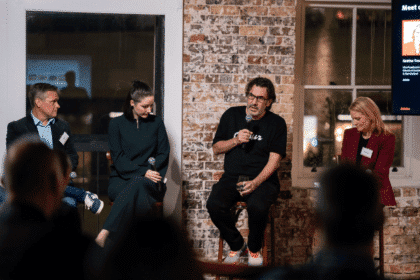In a digital world where attention is often divided among various devices, channels and platforms, how can brands and marketers make their advertising impactful enough to capture and maintain the attention of consumers?
Here are five lessons that the ad tech experts at VDX.tv have learned about harnessing audience attention after working with some of the world’s top brands on their video advertising campaigns.
Lesson #1: Video is one of the most powerful mediums to connect with consumers at both the upper and lower ends of the funnel.
The dynamic combination of sight, sound, motion grabs the attention of audiences better than static imagery. The proof? Video viewers say that they retain 95 per cent of a message when it is delivered through video. Likewise, 84 per cent of consumers say that watching a brand’s video convinced them to buy that brand’s product or service.
For marketers aiming to move towards a more holistic strategy that supports the full-funnel, video can be an extremely effective tool.
Lesson #2: Consumers use multiple devices daily – an omnichannel video strategy is critical to maintaining a brand presence and remaining top of mind.
According to the ACMA, the average Australian internet user used 4.4 types of devices to access in the internet in 2020, with top devices being mobile phone, laptop, tablet and smart TV. In order to make a lasting impact, a brand’s video advertising must reach consumers wherever they are and, on whatever device they are using.
A study conducted by VDX.tv with research firm MediaScience found that advertising across the full combination of desktop, mobile and CTV screens drove a 149.6 per cent lift in brand awareness when compared against desktop and mobile advertising alone.
Lesson #3: Household influence impacts brand awareness.
For many consumers, close friends and family members are the most influential players when it comes to making a purchase decision. In fact, 88 per cent of purchase decisions are made or discussed at home.
For brands aiming to activate that power of influence, it is important to employ the right household targeting strategy to identify and reach all members within the home on their connected devices (Australian households in 2020 netted 19.7 internet-connected devices, on average).
For maximal impact within the household, brands should consider amplifying their video message, starting on the big screen with CTV (as watching TV is often a communal event) and then extending that messaging to individuals within the home on their personal devices, providing the chance to engage with the ad on a one-to-one level.
Lesson #4: Consumers prefer choice, with the ability to opt in and interact on their own terms.
Advertising done poorly can leave viewers feeling like they’ve had an intrusive experience. But with opt-in, interactive video ads, consumers are able to lean in and explore a brand on their own terms, which ultimately contributes to a more meaningful and positive brand experience.
A 2021 study by Magna, IPG, Media Lab and Verizon Media found that interactive ads achieved 23 per cent aided recall (versus 15 per cent for standard video ads) among consumers who were actively researching or comparing products. Similarly, brand favorability saw a five per cent increase when comparing interactive ads to standard video ads.
Lesson #5: Consumers are much more likely to engage with advertising that is relevant.
It’s no surprise that audiences are more willing to give their attention to advertising that is relevant to their interests and needs. Around 44 per cent of consumers say that they have tried new brands after seeing a relevant ad, and 69 per cent of consumers say they are more likely to look at an ad that is somewhat relevant to the content they are viewing.
Contextual targeting of your video ads, based on audience interest and intent, will ensure that your messages reach those users most likely to engage.
On the creative end, VDX.tv found that including elements of personalisation and localisation within your video advertising – whether that be dynamic offers, city name, or closest store location – can move the needle from consideration to action.
To learn more about how video-driven advertising can help your brand capture attention and connect with the audiences that matter most, visit www.vdx.tv or email [email protected].








